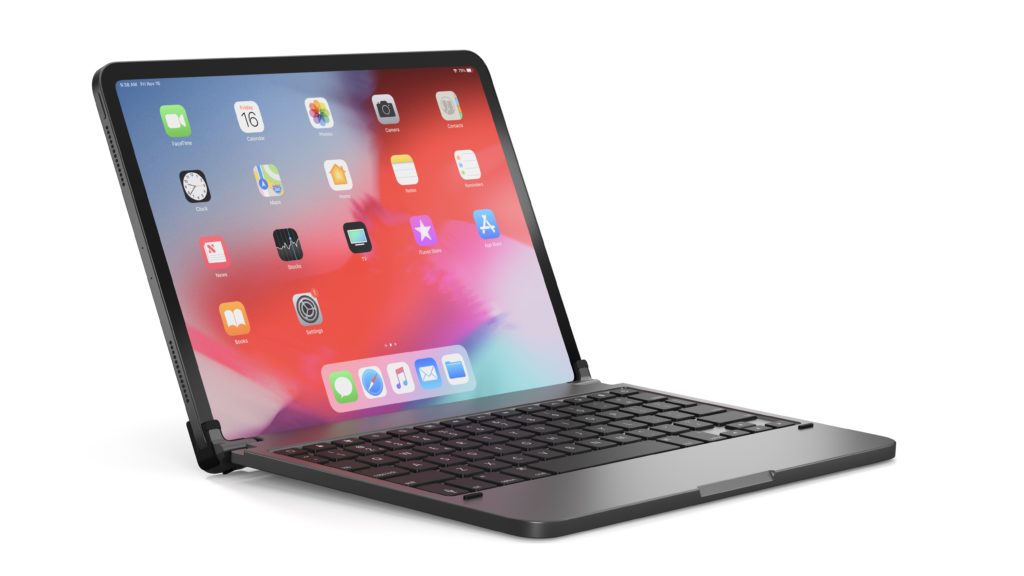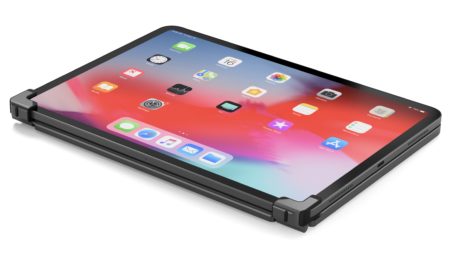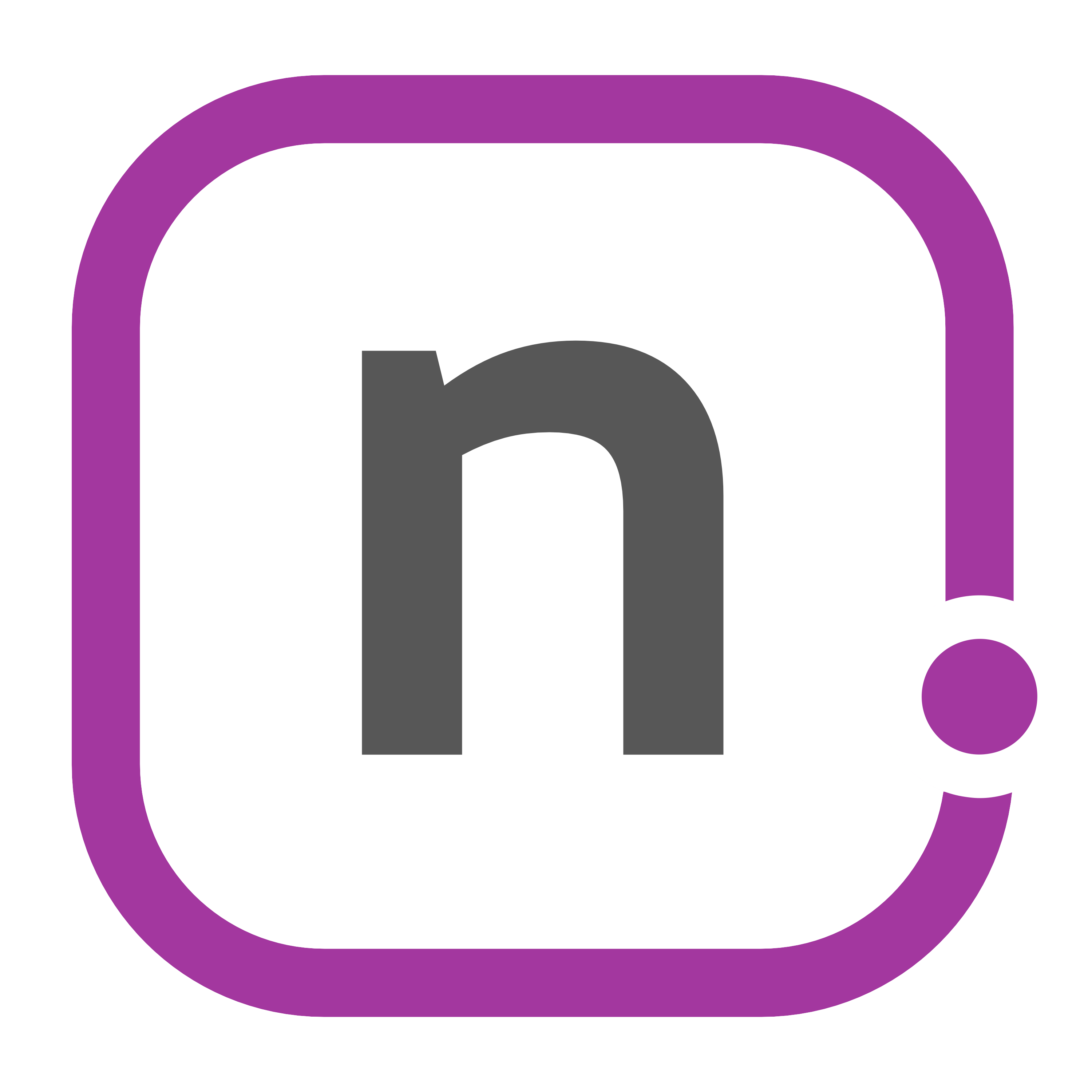Brydge Pro Keyboard

When I purchased iPad Pro 11", I immediately bought the Smart Keyboard Folio (SKF, as I refer to it).[1] At the time, this was the best – and only – keyboard option made specifically for the iPad Pro. I needed something that wasn't heavy, something portable, and something versatile. Over time, some of those needs have changed, and I've added a few more use cases that might not be best satisfied by the SKF. So when the Brydge Pro keyboards were announced, I was intrigued about the possibility of that option. I reached out to the team at Brydge, who were kind enough to send me an 11" Brydge Pro keyboard review unit to try out.
The unboxing experience is very akin to Apple: everything has a purpose, it's very clean, and well considered. In the box, you get the keyboard, a USB-C to USB-C cable, and the back panel. I like the inclusion of the back panel for most situations. While I do like this for when I'm carrying it around in a bag, I found that it didn't always fit as well as I would have liked; there might be an improvement in the tolerancing of the part that could help. I also found that a few times, I would slide the Brydge towards me on a table, and the back panel would catch on the bottom edge and want to come off. When you use it in tablet mode – the mode where you can write on it with the pencil – it does prevent it from folding fully flat; you'll have to set it off to the side to use it in that way. There's just no room for the back panel in that device sandwich. It just feels odd to throw that to the side when you want to use it in this way.

The keyboard itself is a Bluetooth keyboard, and utilizes a USB-C cable to charge. You can even charge the keyboard from your iPad Pro if you're running out of power. Out of the box, the keyboard had about 78% power, which was great to get me started. It took about 5 days for the battery to run down to where I wanted to charge it again, likely due to the backlit keys. I have found that if you're doing a lot of typing with the keyboard lit, you're going to drain it a lot faster.
Having the battery in the keyboard means it was going to be heavy compared to the SKF, which brings me to the first thing I immediately noticed about the Brydge Pro keyboard: this thing is heavy. Not just a little, but a lot. At 700 grams for the keyboard and the protective cover, it more than doubles the weight of the iPad Pro[2] carry in my bag; compare that to the SKF, which clocks in at just 302 grams, and it's clear to see that you need to be very comfortable with the extra weight if you're going to carry this around. It may not seem like a lot, but it's significant. The extra weight is great for when you're using it in your lap, however, like when you're on a couch or as I did in a car while on a road trip; the SKF tends to be more top-heavy,[3] and doesn't feel as stable in those instances whereas the Brydge felt solid.
The next thing I noticed: the keyboard is a bit narrower than the SKF. Being that this is the 11" model, that width can take some getting used to. But I was able to adapt over the first several days. The placement of the Siri key is also a bit difficult with the layout, as my finger often presses is when I'm attempting to use the control key. Again, this layout just takes some getting use to and is not insurmountable; I'm even trying to utilize Siri more now with this key, using the Type to Siri accessibility feature, and the availability of such a key is welcome. Having the media keys above the row is great. I really wish that Apple would figure out how to make this happen. I've suggested a couple of different ways before, but I doubt they'd ever consider it.[4]
My review unit did have a couple of issues: I noticed that the lettering on the keys weren't straight. I notice these sorts of things all the time as part of my day job, so it was immediately apparent to me. It's not a deal breaker by any means, and my hope is that it is because this is an early review unit. The main issue that I did have with the keyboard has been the missed keystrokes. It's not all the time, but when it does happen, it takes me out of my writing focus. I reached out to the team at Brydge to let them know, and not only did they quickly respond acknowledging my concern while assuring me that this is not normal and they wanted to inspect the unit to see what was going on, but they also shipped me a new one the day after. Issues can happen in products from time to time, and even though this appears to be an isolated incident, the quick customer service experience and the fact that Brydge stand by their products is fantastic. The second unit I used did not have this issue, and most of my missed keystrokes were due to the more narrow keyboard or my lack of force to activate the key travel.
Overall, I really like the Brydge Pro keyboard. The keys feel very good, the infinite angles and better lap capability are very versatile, and it really does make this combination of Brydge keyboard and iPad Pro feel like a traditional laptop. But I also couldn't help but notice that this might not be the best keyboard for me for the way I do work. In my day job, I'm often moving between typing and notetaking with the Apple Pencil, and the Brydge is more cumbersome for that particular way of working. I can lay it fully flat, but that doesn't work as well sitting on my lap.
At the end of my time with the review unit, I came away mixed: it's not as flexible for my style of working, but it's a really fantastic option for the iPad Pro. I'm likely keeping my iPad Pro for a few more years, so having this option in addition to the Smart Keyboard Folio and the Smart Folio (knockoff) is the trifecta, and something I'm excited to add to my kit portfolio. I might, however, wait a bit before I buy this: with iPadOS 13 and the addition of an accessibility feature which provides cursor support, I can't help but think that Brydge might be working on a trackpad edition, similar to the version they have for the Surface Pro. If this existed, I wouldn't have to carry an extra piece of kit in my bag. If they added that feature, it would push me over the edge for sure. But if you're in the market for a laptop-like keyboard, I cannot recommend this one enough.
I actually bought the Smart Folio (SF) before this, but immediately returned it after 30 min because I realized that my use cases needed the SKF. ↩︎
the iPad Pro weighs 470g, for reference ↩︎
There's that word again, heavy. ↩︎
My idea: turn the "globe" key in the bottom left of the keyboard with a "FN" key. Add the media functions to the number keys in the same way. This would also allow for the addition of a hard-key Siri button if you press and held the combination for a home button. Again, this is a way to solve it, and certainly not the way I envision Apple would do it. But I really wouldn't mind it being there. ↩︎
